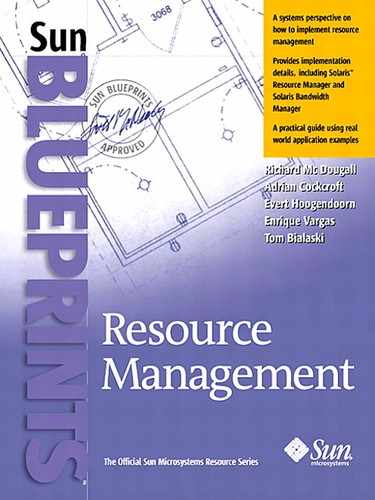When to Use SRM Software
The SRM software is the Sun resource management extension for the Solaris operating environment and should be used when more advanced resource management and control is required.
For example, two workloads can be consolidated onto a single system using processor sets to manage the CPU resource by allocating 10 processors to workload A and 8 processors to workload B. Although this would provide processor limits for each workload, resources could be potentially wasted if one of the workloads is not using all of its share of the processors because the spare CPU cannot be used by any other workload.
The SRM software provides the following advantages over base Solaris resource control:
Better utilization of system resources
Dynamic control of system resources
More flexible resource allocation policies
Fine-grained control over resources
Decayed usage of resources
Accounting data for resource usage
Relationship to Other Solaris Resource Control Features
Base Solaris Operating Environment
The Solaris operating environment includes several features that provide control over certain types of resources. Some features, such as nice(1) and processor sets, are part of the basic Solaris software and allow a limited form of resource management.
The nice(1) command permits users to manipulate program execution priority. Unless superuser privilege is invoked, this command only permits the user to lower the priority. This can be a useful feature (for example, when a user starts a low-priority batch job from an interactive login session), but it relies on the cooperation of the user. The SRM software enforces administrative policies, even without the cooperation of the user.
Processor sets were introduced in the Solaris 2.6 release. This feature allows you to divide multiprocessor systems into logical groups and permits users to launch processes into those groups. The advantage is that workloads running in one processor set are protected from CPU activity taking place in any other processor set. In some ways, this is similar to what the SRM software does, but the two features operate on a completely different basis. Processor sets control only CPU activity. The control is at a relatively coarse-grained hardware level, because processors can belong to exactly one processor set at a time. Especially in the case of relatively small systems, the granularity may be quite high: on a 4-processor system, the minimum resource that can be assigned is 25 percent of the system.
The SRM software has much finer-grained control. Each user is allocated a share of the system. The shares can be distributed arbitrarily on a fine granularity, and the scheduler will allocate resources accordingly. For example, if 50 shares are granted, and one user has 40 of them, that user will get 40 / 50 = 80 percent of the resource. Similarly, if 67 total shares are granted, a user with 57 shares will get 85 percent of the resource. In addition, the SRM software can control resources other than CPU.
Dynamic System Domains
The Sun Enterprise 10000 server has a feature called dynamic system domains, which allows you to logically divide a single system rack into one or more independent systems, each running its own copy of the Solaris operating environment. For example, a system with 32 CPUs on 8 system boards might be operated as 1 system with 16 CPUs, and 2 other systems with 8 CPUs each. In this configuration, three copies of the Solaris software would be running. The dynamic system domains feature also permits controlled movement of resources into and out of each of the Solaris images, thus creating a relatively coarse-grained facility for managing physical resources. (The minimum unit of inter-domain allocation is an entire system board.) The SRM software is similar to dynamic system domains in that it provides the mechanisms to allocate resources, but it does so in very different ways. The SRM software runs within a single instance of the Solaris operating environment, and provides fine-grained administrative control to the resources in the system. Dynamic system domains divide a single piece of hardware into multiple instances of the Solaris operating environment. Dynamic system domains provides tools to manage the transfer of resources between instances of the Solaris operating environment running on the same Sun Enterprise 10000 frame. The SRM software can be run in each instance of the Solaris operating environment within a Sun Enterprise 10000 system and used in conjunction with dynamic system domains.
Dynamic Reconfiguration
The dynamic reconfiguration feature of Sun Enterprise servers enables users to dynamically add and delete system boards, which contain hardware resources such as processors, memory, and I/O devices. The effect of a dynamic reconfiguration operation on memory has no impact on SRM memory-limit checking.
Solaris Bandwidth Manager Software
The Solaris Bandwidth Manager software is a product that works with the Solaris kernel to enforce limits on the consumption of network bandwidth. The Solaris Bandwidth Manager software is a form of resource management software that applies to a different class of resources. The SRM software and the Solaris Bandwidth Manager software have different and separate management domains: the SRM software operates on a per-user or per-application basis, while the Solaris Bandwidth Manager software manages on network identities, including combinations of per-port, per-service, and per-protocol bases.
